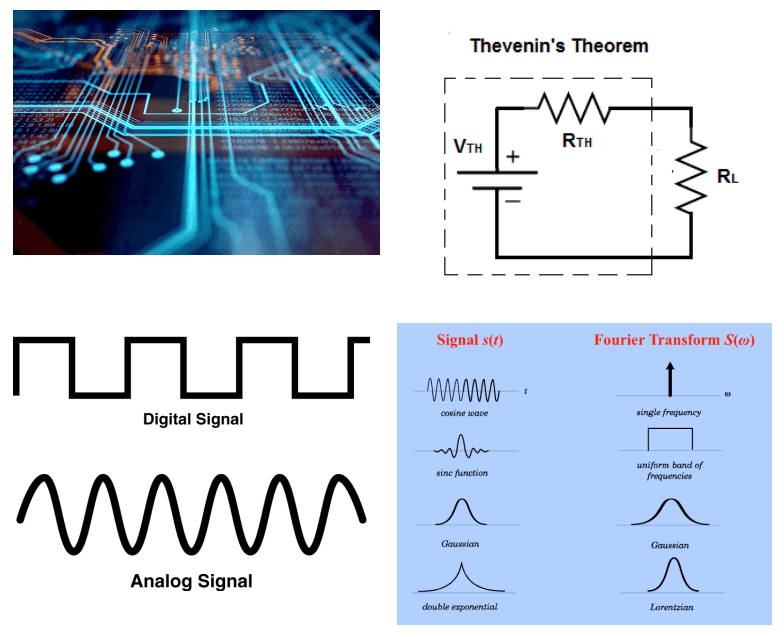Circuits and Signal Analysis

The first part of this subject was about solving circuit diagrams using various rules such as voltage and current dividers, Kirchoff's rules, and Thevenin's and Norton's theorems. I was quite comfortable with these topics except that the numericals were very long and tedious. Also given my reputation with careless math errors, I felt the need to be a little extra careful while solving them.
Most of the lab experiments for this course dealt with the first half as we were required to connect the circuits on physical breadboards and observe time constants and perform other calculations. This interested me quite a bit because there aren't many opportunities to physically observe things we only ever learn to calculate in books.
The second part was a little more theoretical in the sense that it dealt with signal processing and we had no physical lab experiments for it. It scratched the surface of Fourier and LaPlace transforms and how they are used to convert signals from the time domain to other domains for further analysis.
The final exam was also quite relevant to the syllabus and I was well prepared so I did quite well and achieved an A grade. The knowledge from this subject also proved to be quite helpful in a year 3 semester 1 course called Sensors, Control and Interfacing which built on the topics introduced in part two of the course.
Overall Circuits and Signal Analysis was an interesting subject with a lot of math and calculations but it was intuitive and relevant to other subjects as well.
Keywords
- Thevenin's Theorem
- Kirchoff's Laws
- LaPlace Transformations
- Math-Based
- A Grade